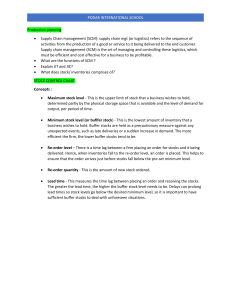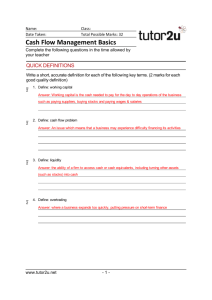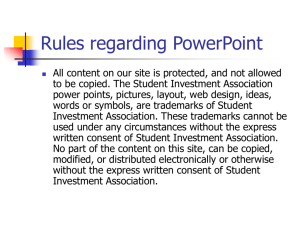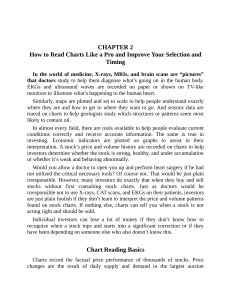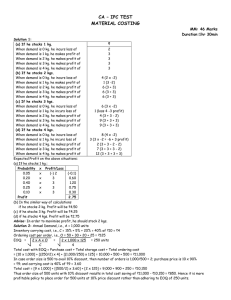Stock control - Business Studies Online
advertisement
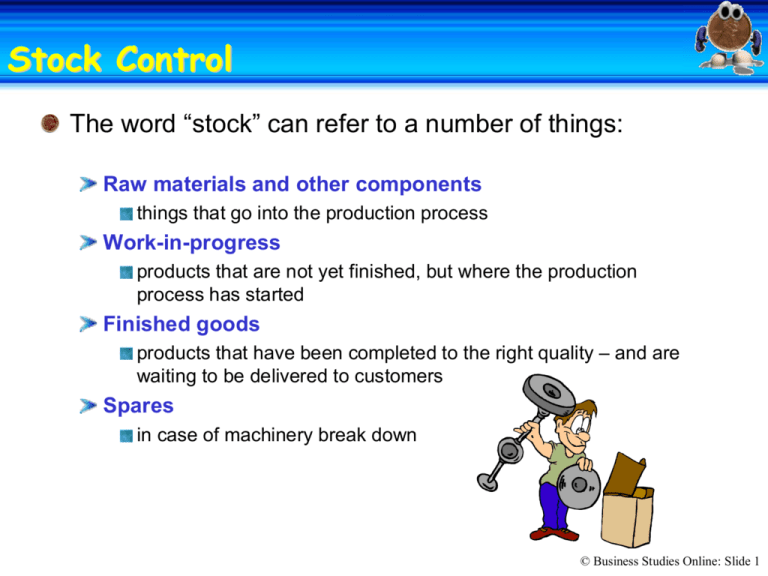
Stock Control Control The word “stock” can refer to a number of things: Raw materials and other components things that go into the production process Work­in­progress products that are not yet finished, but where the production process has started Finished goods products that have been completed to the right quality – and are waiting to be delivered to customers Spares in case of machinery break down © Business Studies Online: Slide 1 Problems of Holding Too Much Stock Stock Businesses want to hold as little stock as possible due to Higher insurance costs Since the value of the company on paper is higher Shrinkage Instances of theft are less noticeable Obsolescence Stock may go out of date, or be superseded by new technology Storage Costs Stock must be stored – so larger warehouses are needed Finance Many firms buy supplies using trade credit. If the stocks are not sold before payment is due it could create cash flow problems Opportunity Cost Money tied up in stocks cannot be used elsewhere © Business Studies Online: Slide 2 Problems of Holding Too Little Stock Stock If insufficient stock is held a business may encounter: Lost Sales Customers are likely to go elsewhere, and may not return! Loss of Goodwill Business will get a reputation for being unreliable Longer Lead Times Customers will be expected to wait if they don’t go elsewhere This problem can be overcome in 2 ways: The use of EPOS Common in retail industry The use of Stock Control Charts © Business Studies Online: Slide 3 Stock Control Charts Charts These are used to maintain favourable stock levels They are based upon 3 assumptions: All deliveries are made correctly and on time There are no faulty stocks Stock is used up at a constant rate The chart will show: The Maximum Stock Level – the most stock a firm wants to hold The Re­Order Level – the level at which a new order is placed The Minimum (Buffer) Stock Level – the least stock a firm wants to hold Re­Order Quantity – the number of items that are ordered Lead Time – the time between placing the order and receiving it © Business Studies Online: Slide 4 Stock Control Charts Charts Stock Levels A typical stock control chart will look like this: 300 Maximum Stock Level (eg 300 units) 200 Re-Order Level (eg 200 units) 100 Buffer Stock (eg 100 units) Lead Time (eg 2 weeks) Jan Feb Time Mar Minimum Stock Level (eg 100 units) Apr © Business Studies Online: Slide 5 Calculating Average Stock Stock It is sometimes useful for a firm to know how much stock it holds on average This can be calculated using the following formula: Average Stock Level = Minimum Stock Level + Maximum Stock Level 2 This would be drawn as a horizontal straight line half way between the maximum and minimum stock levels on a stock control chart © Business Studies Online: Slide 6 Just-In-Time Stock Control Control An idea developed by the Japanese at Toyota in the 1950s They recognised that efficiency could be maximised if stocks were always at an absolute minimum It therefore involves deliveries taking place just as stocks are required It has become very popular, particularly in the automotive industry and it has been adopted by © Business Studies Online: Slide 7 The Advantages of Just-In-Time Time Better cash flow since money is not tied up in stocks Reduced waste, obsolescence and damage More factory space is available for productive use Improved relationships with suppliers Motivation of workers is improved, since they are given more responsibility © Business Studies Online: Slide 8 The Advantages of Just-In-Time Time Rely very heavily on suppliers Increased administration costs, due to increase in orders May lose advantages of bulk buying Problems if breakdowns occur Difficult to respond to changes in demand Loss of control on the ability to meet deadlines © Business Studies Online: Slide 9

